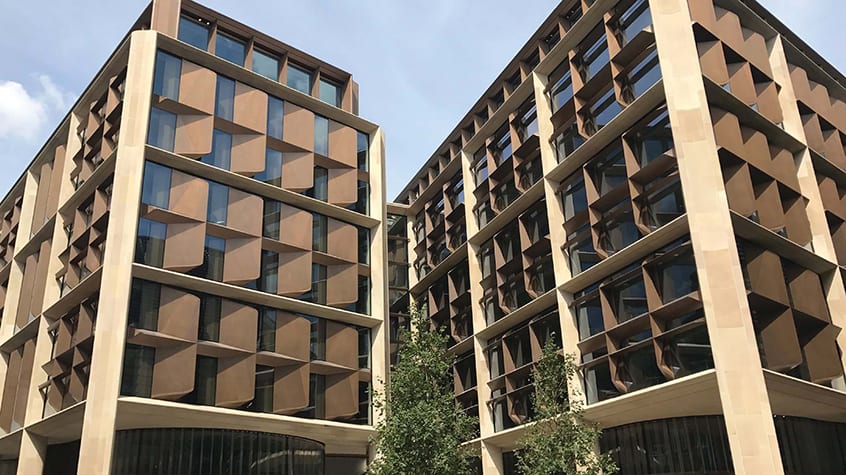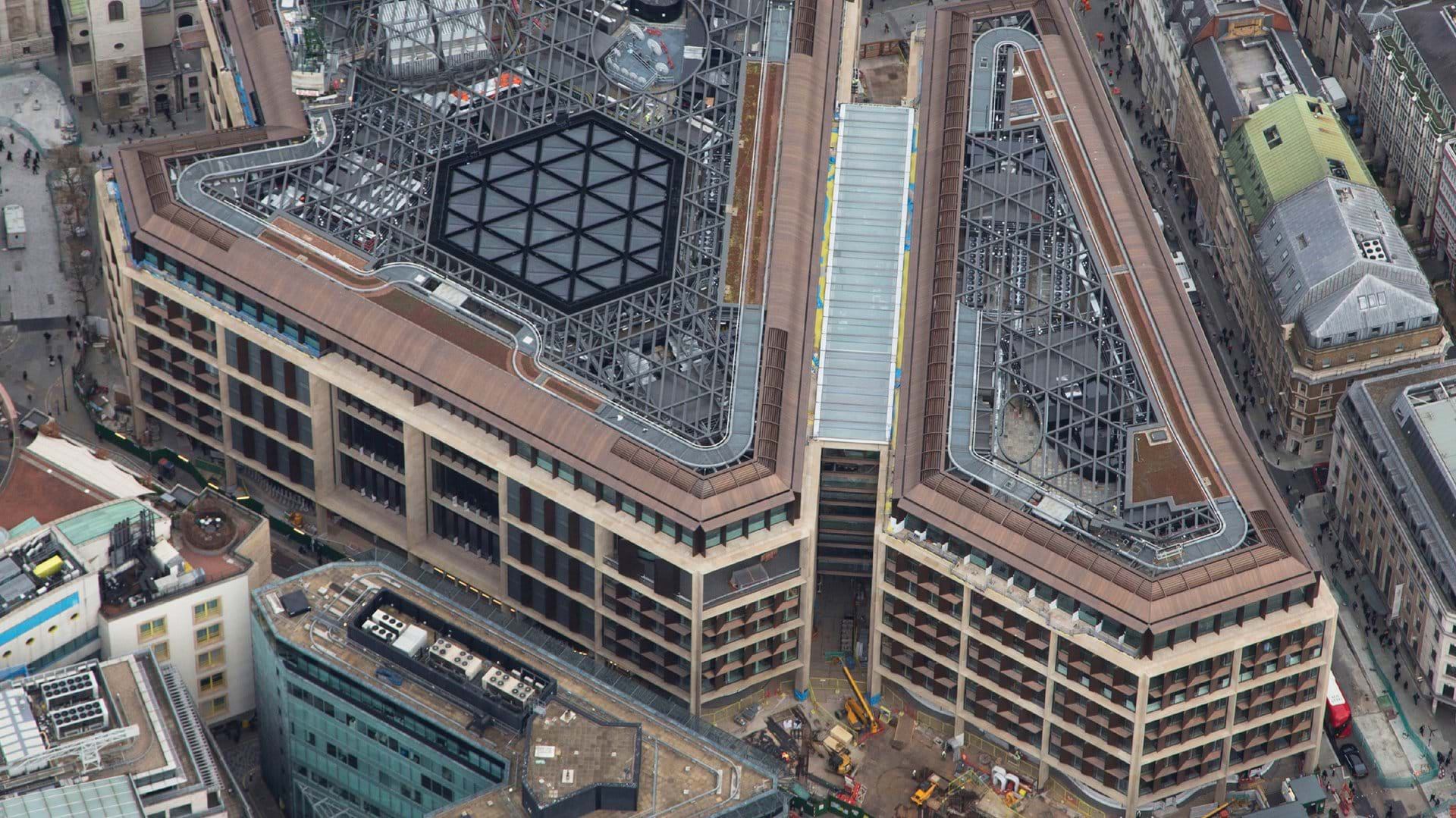Opening later this month in the City of London, Bloomberg’s new European headquarters is the “world’s most sustainable office building”, says its architect, Foster + Partners.
The building “breathes” in response to weather, consumes 40% less power for lighting, and saves or reuses enough water a year to fill 10 Olympic swimming pools.
Carbon dioxide sensors can even push fresh air to where the most people are at a given time.
Compared to a typical office building, the new Bloomberg building’s environmental strategies deliver a 73% saving in water consumption and a 35% saving in energy consumption and associated CO₂ emissions.
These and other features meant the building achieved an “Outstanding” rating against the BREEAM sustainability assessment method with a 98.5% score.
Foster + Partners says this is the highest design-stage score ever achieved by any major office development.

The building’s bronze blades can open and close, allowing the building “breathe” naturally (Foster + Partners)
The client is happy. Michael R. Bloomberg, founder of Bloomberg L.P. said: “We believe that environmentally-friendly practices are as good for business as they are for the planet. From day one, we set out to push the boundaries of sustainable office design – and to create a place that excites and inspires our employees. The two missions went hand-in-hand, and I hope we’ve set a new standard for what an office environment can be.”
Innovative power, lighting, water and ventilation systems account for the majority of energy savings. Designed to reuse waste products, respond to the building’s external environment and adapt to its occupancy patterns, many of these solutions are first-of-a-kind, Foster + Partners said.
“In some of our first discussions on the project, Mike Bloomberg and I arrived at a ‘meeting of minds’ on how the design of the new Bloomberg headquarters should incorporate the highest standards of sustainability,” said Norman Foster, founder of Foster + Partners.

The building achieved an “Outstanding” rating against the BREEAM sustainability assessment method
“The project evolved from thereon into a building that is one of the most sustainable in the world. The deep plan interior spaces are naturally ventilated through a ‘breathing’ facade while a top lit atrium edged with a spiralling ramp at the heart of the building ensures a connected, healthy and creative environment.”
Key innovation highlights include:
- Integrated Ceiling Panels combine heating, cooling, lighting and acoustic functions in a petal-leaf design. The system, which incorporates 500,000 LED lights, uses 40% less energy than a typical fluorescent office lighting system.
- Rainwater from the roof, cooling tower blow-off water, and grey water sources like basins and showers is captured, treated and recycled to serve vacuum flush toilets. These use net zero mains water for flushing. Overall, water conservation systems will save 25 million litres of water each year, enough to fill 10 Olympic swimming pools.
- When the weather is temperate the building’s bronze blades can open and close, allowing the building “breathe” naturally. Reducing dependency on mechanical ventilation and cooling equipment significantly reduces energy consumption.
- CO2 sensors allow air to be distributed according to the number of people occupying each zone of the building at a given time. The ability to dynamically adjust airflow in response to occupancy hours and patterns is expected to save 600-750 MWhr of power a year, reducing CO2 emissions by approximately 300 metric tonnes each year.
- On-site Combined Heat and Power (CHP) generation supplies heat and power in a single system with reduced carbon emissions. Waste heat generated from this process is recycled for cooling and heating and, in use, is expected to save 500-750 metric tonnes of CO2 each year.
Top image: Bloomberg’s new European headquarters under construction in London (Foster + Partners)











